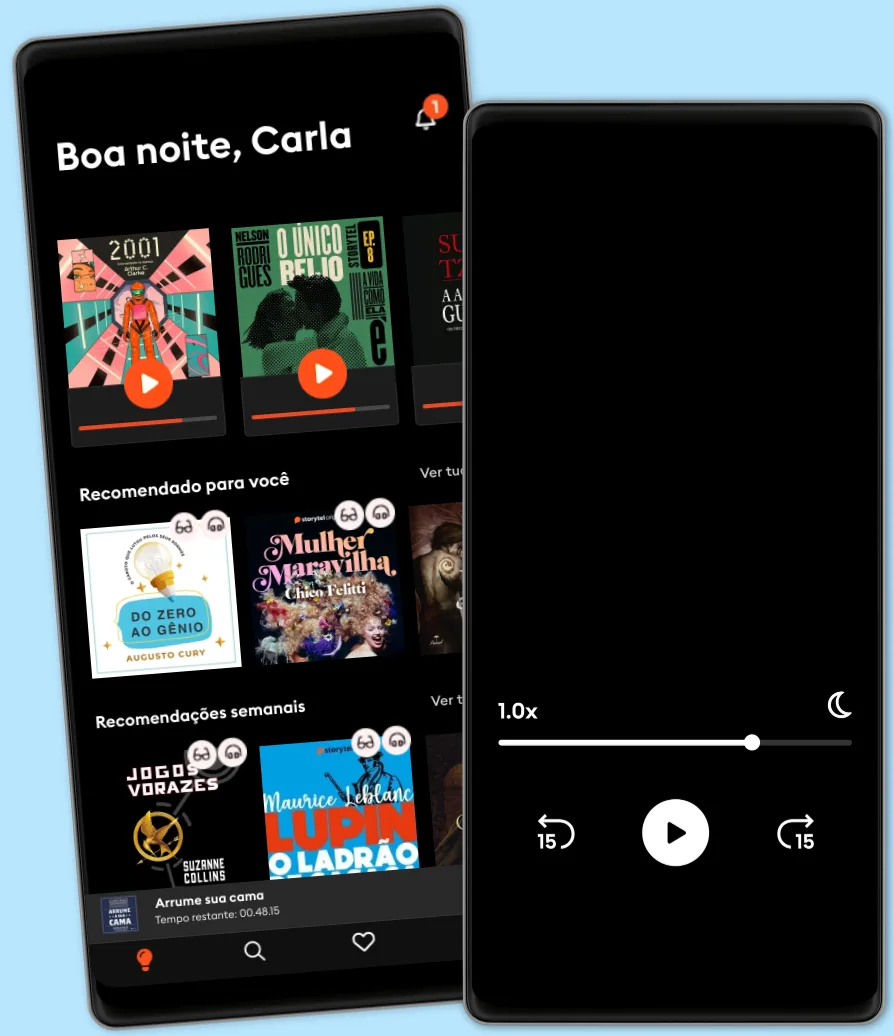Ouça e leia
Entre em um mundo infinito de histórias
- Ler e ouvir tanto quanto você quiser
- Com mais de 500.000 títulos
- Títulos exclusivos + Storytel Originals
- 7 dias de teste gratuito, depois R$19,90/mês
- Fácil de cancelar a qualquer momento

Medieval Art in the Christian West
- Idiomas
- Inglês
- Format
- Categoria
História
September 4, 476 A. D. marked the end of the Western Roman Empire. After several centuries of prosperity, Europe sank into chaos. With Charlemagne, a new dynamic begins that of a civilising reconstruction. The Romanesque period is part of the rediscovery of this Roman Empire, lost in memories, but living on in the architectural testimonies of the cities and the countryside. In art history, Romanesque art refers to the period between the beginning of the 11th and the end of the 12th century. This era was characterised by a great diversity of regional schools, each practising their own unique style. In architecture as well as in sculpture, Romanesque art is marked by raw forms. Through its rich iconography and captivating text, this work endeavours to restore the importance of this art which is often overshadowed by the later Gothic style. Gothic art is defined by the powerful architecture of the cathedrals of northern France. It is a medieval art movement that evolved throughout Europe over 200 years. Abandoning curved Roman forms, the architects started using flying buttresses and pointed arches to open cathedrals to daylight. A period of great economic and social change, the Gothic era incorporated new iconography celebrating the Holy Mary — a drastic contrast to the dismal themes of Roman times. Full of rich changes in all of the various art forms (architecture, sculpture, painting, etc.), Gothic art paved the way for the Italian Renaissance and the International Gothic movement.
© 2024 Parkstone International (Ebook): 9781781603048
Data de lançamento
Ebook: 5 de junho de 2024
Tags
Outros também usufruíram...
- Icons Nikodim Pavlovich Kondakov
- Leonardo Da Vinci - Thinker and Man of Science Eugène Müntz
- Christ in Art Ernest Renan
- Raphael and artworks Eugene Müntz
- Turner Stéphanie Angoh
- Edgar Degas and artworks Jp. A. Calosse
- Franz Marc and artworks Klaus H. Carl
- Hans Holbein the younger Jeanette Zwingenberger
- Bosch Virginia Pitts Rembert
- Neoclassicism Victoria Charles
- Ivan Shishkin Victoria Charles
- Gustave Courbet Georges Riat
- 1000 Buddhas of Genius Victoria Charles
- Romanesque Art Victoria Charles
- The ultimate book on Raphael Eugène Müntz
- Gustave Courbet and artworks Patrick Bade
- Utamaro Edmond de Goncourt
- Félix Vallotton Nathalia Brodskaïa
- James McNeill Whistler Patrick Chaleyssin
- Romanesque Art Klaus Carl
- Thayer's Life of Beethoven, Part I Elliot Forbes
- Paul Signac and artworks Paul Signac
- Gregorian Chant and the Carolingians Kenneth Levy
- Listening to Reason: Culture, Subjectivity, and Nineteenth-Century Music Michael P. Steinberg
- Summary of Howard Fast's The Jews IRB Media
- The Emotion Revolution and The Art of Living Well 2-in-1 Bundle: Harnessing the Power of Feeling for a Balanced and Mindful Life, A Guide to Finding Joy and Fulfillment EMILY JONES
- Lessons From the Music Room: A How-To Guide for the Beginning Music Teacher Cheryl Baker
- E. M. Bounds on Prayer: 31 Powerful Insights to Strengthen Your Prayer Life. GodliPress Team
- Lessons for the Christian's Daily Walk: Devotional and Practical Meditations on the Book of Ecclesiastes George Mylne
- Amazing Love C.H. Spurgeon
- We Are Not Who We “Think” We Are Kate Gustin, Ph.D.
- Leonardo Da Vinci - Artist, Thinker, and Man of Science Eugène Müntz
- 18 Maneiras De Ser Uma Pessoa Mais Interessante Tom Hope
4
- Pratique o poder do "Eu posso" Bruno Gimenes
4.6
- O sonho de um homem ridículo Fiódor Dostoiévski
4.7
- Gerencie suas emoções Augusto Cury
4.5
- Harry Potter e a Pedra Filosofal J.K. Rowling
4.9
- 10 Maneiras de manter o foco James Fries
3.8
- Jogos vorazes Suzanne Collins
4.8
- A metamorfose Franz Kafka
4.4
- Mais esperto que o diabo: O mistério revelado da liberdade e do sucesso Napoleon Hill
4.7
- Poder e Manipulação Jacob Petry
4.6
- A gente mira no amor e acerta na solidão Ana Suy
4.5
- A arte da guerra Sun Tzu
4.6
- Os "nãos" que você não disse Patrícia Cândido
4.8
- Pare de Procrastinar: Supere a preguiça e conquiste seus objetivos Giovanni Rigters
4.3
- A cantiga dos pássaros e das serpentes Suzanne Collins
4.5
Português
Brasil